Never a Dull Day: A Tribute to Wyatt Wade
June 28, 1946–February 23, 2024
Publishing is satisfying because it is a business that sells ideas. In our case . . . we are making a living doing good things for our culture. The people I get to work with are creative, work hard, and have fun. There is never a dull day at Davis.
–Wyatt, from Worcester Business Journal, December 28, 2009
There has been a wave of reminiscing flowing through Davis these past weeks. There isn’t a person I’ve spoken to who didn’t have a memory to share about my father. Wyatt would have loved this! If you knew him, you knew he loved stories. He loved their energy, meanings, and the inherent connection they create. Stories are about memories and the people that make them, they keep us linked to each other and the moments that shape us.
So, it is fitting Wyatt will be remembered through the tales he starred in. I hope you enjoy reading about them. He was a force of nature and ensured there truly was never a dull day at Davis.
–Julian Davis Wade, son of Wyatt and current President of Davis Publications and Publisher of SchoolArts magazine
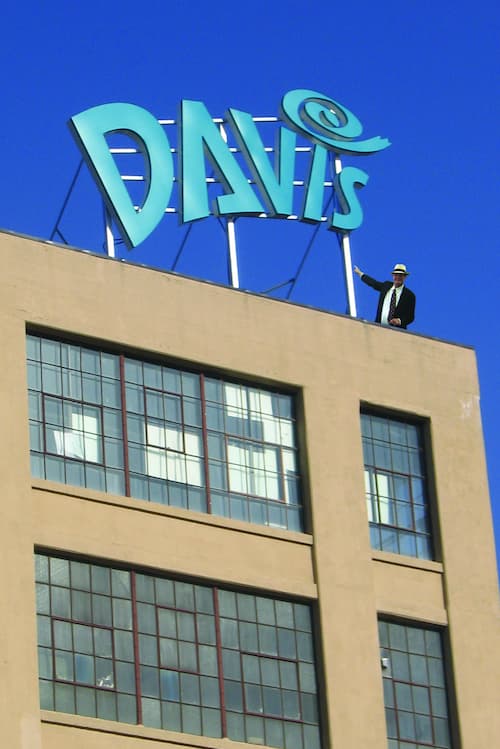
Marilyn G. Stewart, author of Thinking through Aesthetics, Rethinking Curriculum in Art, editor of the Art Education in Practice series, co-author of Explorations in Art, grades 1–6, Experience Art.
Art education has lost one of its most enthusiastic fans.
My first memory of Wyatt was of that tall guy wearing a white cowboy hat who, at an early NAEA conference, met with Mary Erickson, Eldon Katter, and me as we proposed that Davis publish BASIC, our framework designed to help art teachers create discipline-based art curricula. He was gracious and friendly, but, as he explained, Davis Publications was already committed to Laura Chapman’s curriculum. Still, our talk of Kutztown’s history of attending to the practical needs of art teachers resonated with Wyatt. As I learned over the years, the daily lives of art teachers were always at the forefront of his thinking. He routinely looked to the future, considered how art education might change, and how Davis might meet its evolving needs.
A second encounter with Wyatt began and ended with an invitation to meet with him and editor Helen Ronan to plan a series of books that would inform art teachers of new theoretical developments in our field and help connect those developments with their day-to-day teaching lives. That meeting spawned the Art Education in Practice series, still expanding today, and a friendship that spanned over 30 years.
Much of my time spent with Wyatt was filled with laughter. We discovered that we were born exactly two weeks apart, prompting many stories of our childhoods, our hilariously eccentric families, and crazy escapades of our youth.
Always ready for an adventure, Wyatt loved to use his video recorder to capture interesting moments to share with the Davis team back in Worcester. Once, while visiting the Getty Center in Los Angeles, where I was a visiting scholar, he videotaped my presentation with L.A. teachers and then continued to record our trip from his car as he followed me through the culturally rich and colorful streets of L.A.
During that L.A. visit, Wyatt asked me to create a new middle school textbook program. In the weeks following, while I was considering his proposal, he would call me at 9 a.m. his time—6 a.m. my time!—and tease me with “This is your wake-up call!” I finally agreed, and brought my colleague Eldon Katter into the project. Here again, Wyatt’s trust in Eldon and me was indicative of his focus on the future. At the time, textbooks and other art resources were solely organized around elements and principles of design, art forms, and media. Eldon and I argued to teach for deep understanding of important, “big” ideas about art and the human experience and to organize the curriculum around those themes. This represented a substantial departure from what Davis competitors were doing, and yet it also was predictive of where curriculum, and the new visual arts standards, would go in the future. Later, when it was time to offer a new elementary program, he supported our proposal to align the elementary curriculum with the same enduring ideas.
Wyatt envisioned a role for Davis Publications as not only a provider of substantive content, but also as a “convener.” The annual NAEA Administration and Supervision preconference, still sponsored by Davis, began as a yearly Supervisor’s Summit, convened and funded by Davis to support arts supervisors and their promotion of quality arts education. After meeting separately in various sites around the country, Davis eventually teamed up with NAEA and has supported the preconference ever since.
In these and in so many of his projects at home and in the world of art education, I watched Wyatt approach his vision with relentless energy and enthusiasm. We almost always agreed, but when our ideas did happen to bump into each other, I could always count on three things—his honesty, optimism, and humor. Wyatt brought all these qualities to whatever or whomever was fortunate enough to capture his attention. Luckily for art education, his attention was steady and strong for decades, leaving a legacy that will endure for at least that long.
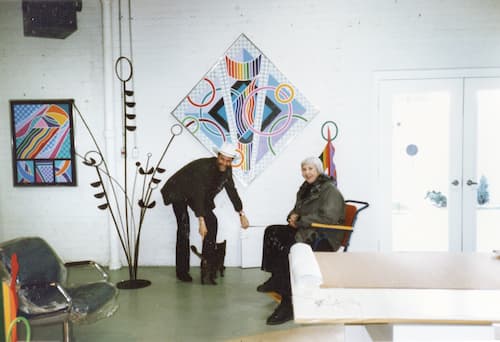
Nancy Walkup, SchoolArts Editor-in-Chief, 2005–present
Between his height, his cowboy hat, and his infectious enthusiasm, you couldn’t miss Wyatt when he walked into a room. I first met him years ago at NAEA and Texas state conventions and got to know him from talking to him every year.
In 2004, at the NAEA convention in Denver, Wyatt invited me to become the editor of SchoolArts, a complete surprise to me. The editor at the time, Eldon Katter, had recommended me as I’d been writing articles for the magazine for some time. I was still teaching, but Eldon said I could do it—and I did. Being editor-in-chief will always be my proudest professional accomplishment thanks to Wyatt and his always-present help and support.
Wyatt was a walking, talking art education ambassador who could and would talk to anyone, anywhere, especially about art education. Until he retired in 2016, you could always spot him easily at NAEA in the middle of the crowd at the SchoolArts/Davis booth (that cowboy hat!). And, of course, he would remember your name!
Besides art education, Wyatt loved diners (he took me to many in Worcester on visits); furniture building; Worcester, Massachusetts (he was the city’s best ambassador—did you know barbed wire was first made in Worcester? And the happy face was invented there?); old trucks (he converted one to run on cooking oil); an insane collection of ball caps (my husband traded him for one); a rambling farm in Maine, and his wonderful family. I am so glad I have known him.
Wyatt, the world won’t be the same without you.
Eldon Katter, SchoolArts Editor-in-Chief, 1994–2005
“You gotta know the territory.” Those are lyrics from “The Music Man,” not words from Wyatt Wade, but they encapsulate my memories of working with Wyatt, a man of great wisdom, magnetic charisma, and a delightful sense of humor.
Yes, you gotta know the territory of education: Wyatt had his finger on the pulse of art and education by way of Davis Publications sales reps all over the country, SchoolArts advisory board members, and of course, his own craftsmanship, scholarship, and avid reading.
Yes, you gotta know the territory, but you also gotta lead: Wyatt was an advocate for diversity, equity, and inclusion long before those words became initialized DEI. I have a memory of Wyatt and Claire challenging state legislators who wanted images of African masks removed from one of Laura Chapman’s textbooks. At the same time, Wyatt was encouraging SchoolArts to be more inclusive by featuring works of diverse cultures and by focusing on art history, criticism, and aesthetics as well as a wide range of interdisciplinary and studio practices. He also liked cartoons!
Yes, you gotta know the territory: You gotta know your friends. I consider myself fortunate to have worked for a man of such notable stature.
Kevin Gatta, co-author of Foundations of Graphic Design, and Communicating through Graphic Design
Wyatt Wade was larger than life.
One story that I’ll always cherish: I was up in Worcester to do some finishing touches on our new edition of Communicating through Graphic Design. Wyatt said “Kevin: tomorrow. Breakfast. 7:00 o’clock sharp in front of the hotel.”
The next morning I hear a big muscle-car sound coming towards me, and Wyatt pulls up in this perfectly restored 1970 metallic blue, spit-shined Chevy pickup truck. Mint! Restored to the whole nine yards! Total Mr. Cool!
Wyatt rolls down the window and tilts his head and winks and says, “Get in—we’re going to the Boulevard.” (A Worcester diner on Shrewsbury Street.) I get in and he says, “Like it?” with a big laugh and that contagious smile. He’s dressed to the nines in his ten-gallon hat, brown corduroy sport jacket, jeans, and cowboy boots. He’s in his glory. I feel like I just entered an episode of the Twilight Zone. We take off like we’re going to the races. My heart is pounding.
When we walk in, everyone knows him, and he holds court in that glorious dining car. For a moment, I feel like I’m part of his crew.
He was a lanky gentleman, a gracious colleague, and a dear friend. He had my back. He had everyone’s. Wyatt was Davis Publications.
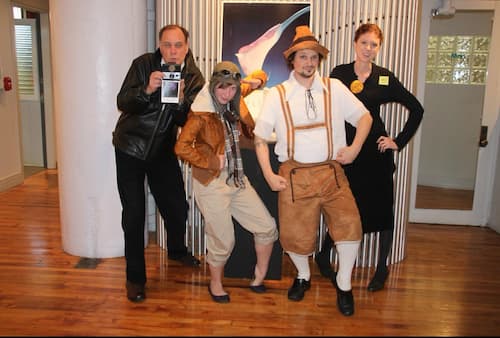
Cathy Weisman Topal, author of Children, Clay and Sculpture, Children and Painting, Thinking with a Line, Explorations in Art Kindergarten, co-author of Beautiful Stuff!, Beautiful Stuff from Nature, Creative Minds Out of School
I first met Wyatt at a Mass Art Ed Association meeting in the late 1970s, shortly after he began as an editor at Davis. I had outlined a clay book, visited the Davis booth at the conference, and asked to meet with someone. That someone turned out to be Wyatt.
After meeting with Wyatt, writing articles for SchoolArts as he’d suggested, and sending in an outline and sample chapter of a book on clay sculpture, Wyatt called—to personally tell me that my book proposal had been rejected. Was it unusual for an editor to call to relay disappointing news, rather than just sending a rejection letter? I remember being surprised and impressed, even with rejection.
Wyatt was an important player in my life as an art educator and author. He mentored me as a writer. I believe that Children, Clay and Sculpture was the first book that he edited. It was written on a typewriter! Wyatt came up with the title!
He was always interested in new ideas. After I visited the early childhood schools in Reggio Emilia, Italy, and campaigned for Wyatt to go to see them for himself, Wyatt invited me to Davis to show my slides and give a presentation on what I had witnessed in Italy. He subsequently met and was smitten with Lella Gandini—liaison for the Reggio Emilia approach in North America. Lella and I co-authored Beautiful Stuff! Learning with Found Materials. Beautiful Stuff appealed to an audience hungry for high quality visual arts challenges and ways to implement change.
In retrospect, it seems to me that Wyatt had picked up on the worldwide growing interest in the education of young children. He brought me and Lella to meetings and conferences He was passionate about improving early childhood education in Worcester and beyond. He was a strong advocate for funding high quality early education, and he made it a priority.
Wyatt was always open to new ideas and technology. When the Smith College educational technology department decided to support the development and creation of Thinking with a Line—a multimedia CD-ROM program, Wyatt was behind it. He took a leap of faith! He was a great support even though the technology failed at first! We ended up showing the beginning Thinking with a Line CD-ROM on a laptop, after valiant efforts to get the digital projector to work. Wyatt, as usual, made good use of the time. He chatted and joked with the audience. Afterwards he reassured me—even told me that I had groupies!
Wyatt had a knack for bringing artists, authors, educators, and creators together and making curriculum development into an exciting, fun, adventure. I remember visiting the Davis building and being surprised by the pool table and the attractive offices and displays throughout. Wyatt believed in the authors and in all the people who worked at Davis. He made each of us feel valued.
Wyatt built an amazing team—everyone who worked at Davis became a friend—part of the family. Wyatt loved connecting people. He relished every opportunity. celebrated every achievement and found ways to make them all special. Wyatt was smart, talented, funny and fun, and so proud of all his Davis family. He was passionate about Davis Publications, the Printer’s Building and all the artists and creators that he met and connected in some way to Davis. The last time that Lella and I met with Wyatt, he relished showing us around the new Davis art gallery, the truly amazing Maker Space, and the musical studios in the Printer’s Building.
He was one of the most alive people I have ever met!
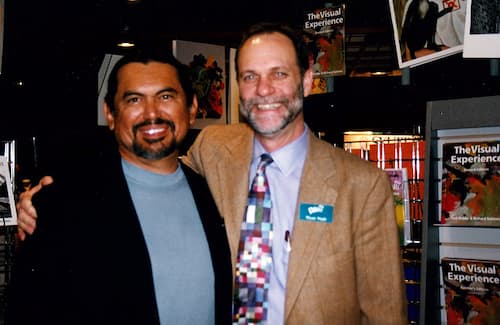
Mary Ann Stanckiewicz, author of Roots of Art Education Practice
Like many other art educators, I first noticed Wyatt Wade as the dynamic public face of Davis Publications. His Western boots and hats, his striking height, and warm smile gave him a distinctive presence at National Art Education Association conventions. Unlike most other art educators, I had the privilege of meeting him outside conventions, learning to appreciate his fascination with history, including art education’s history; his contributions to his adopted New England hometown; and his active support for research in the field.
The fact that Wyatt earned his University of Texas BA in History may have contributed to his keen interest in the history of the Davis family’s printing business and the early days of SchoolArts. He graciously welcomed me to the Davis Publications offices in the Printers Building in Worcester so I could see early issues of the magazine and other publications. In March 2001, Wyatt participated in an NAEA panel, “Remembering the Past: 100 Years of School Arts,” with Kent Anderson, David Baker, Eldon Katter, John Howell White, and me. Wyatt invited my article celebrating the journal’s centennial, “Art Instruction of the Best Kind,” for SchoolArts later that year.
As a member of the American Antiquarian Society, a national research library conserving pre-1900 primary source materials based in Worcester, Wyatt pursued broader interests in the American past, especially printing and book arts. He was an advocate for Worcester and its resources, enthusiastically describing urban revitalization projects in Worcester.
Wyatt’s support for all forms of research in art education was exemplified by his contributions to the annual Studies in Art Education Invited Lecture, delivered during the NAEA conference from the late 1980s. For many years, Davis Publications provided a reception following the lecture; later they donated an honorarium to the invited speaker. No matter how busy Wyatt was during the convention, he made a point of attending the lecture, sitting near the front, and actively listening to each speaker. Wyatt Wade will be missed by art educators, his fellow New Englanders, and everyone who knew him.
Tim McCreight, author of The Complete Metalsmith
When I met Wyatt in 1980 I had recently written a book for a major New York publisher, and while I enjoyed the experience, I was not pleased with the result. The corporate model at that time was to determine the size, shape, and content of a book—right down to the number of photos—then find somebody to write it. I learned a lot in the process but felt that the resulting book was not particularly useful for working jewelers.
I had an idea for a different kind of book. Since I didn’t have a computer at the time, I had in mind a book built entirely with handwritten text and drawn illustrations. Looking back now, even I would describe it as a pretty wacky idea, and that’s where Wyatt comes in.
He had been working at Davis Publications for a relatively short time, mostly dealing with projects that were in the pipeline when he arrived. I happened to come along just when he was in a position to bring in some projects of his own. I suspect Wyatt had to do some fast talking to get this odd little book called The Complete Metalsmith accepted. To most everyone’s surprise, the book did well, went back for a second edition and many reprints. Eventually I purchased the rights from Davis, reworked the material, and published it through my own company, Brynmorgen Press. It remains in print today.
The last time I saw Wyatt was a couple years ago when he was passing through Maine, where I live now. We met for lunch in Portland so I could ask his advice on a business matter. As always, he was knowledgeable, helpful, and kind. I am fortunate to have known him.
Douglass Scott, Graphic Designer
I first met Wyatt when he called me in the late 1980s to ask if I would like to design the format of SchoolArts. I had been recommended to him by Bradbury Thompson, who was my friend and former teacher. Thompson had designed the SchoolArts format in the 1960s, and Wyatt was searching for a new, improved design. I readily agreed, and that project became the beginning of a 33-year professional relationship with one of the best clients and collaborators with whom I have ever worked.
During this time I designed scores of Davis Publications books, teachers’ guides, logos, large reproductions, ads, letterheads, envelopes, and a variety of other items, always working closely with Wyatt. He not only was always aware of the big picture, but also was involved in all the minute details necessary to make things work well and be successful. I always trusted his instincts, and his ability to clarify the issues at hand. His strong and nurturing relationship with his staff and the company’s many authors and consultants maintained Davis as a respected leader in art education.
Wyatt was always enthusiastic—about education, art, design, craftsmanship, publishing, and life. I will remember his kindness, generosity, inclusiveness; and his leadership of not only many projects large and small, but also of the company itself. He was able to balance prudent decision-making with the ability to take chances when he thought it was the right thing to do. Wyatt had infinite knowledge about art and design, as well as the teaching of art. He was always striving for excellence.
I admired Wyatt’s knowledge about almost everything—politics, science, literature, business, and history. His love and respect for Worcester and its institutions was infectious. When I think of Wyatt, I honor his collaborative spirit in service of educating generations of art students and teachers. And, he made me a better designer.
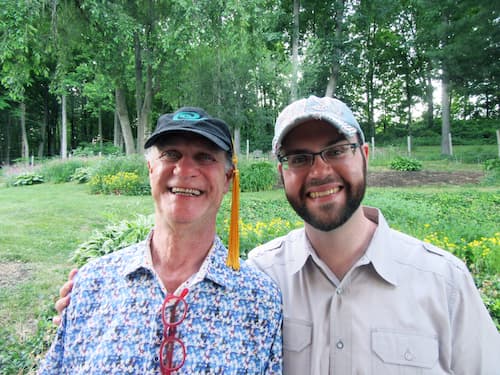
John Howell White, author of Experience Painting
He didn’t have to say a thing. His conference presence pushed out ahead of him, a quiet dust-up leading to a strong, warm-winded departure. It was easy to mistake Wyatt’s power for an affectation, the result of that white western hat hovering over his lanky frame, affirming his Texas heritage. But, after the air had settled and clear hearts prevailed, it was his warm attachments, inquiring mind, and purposeful actions that filled the space. The hat, a mere sidekick.
Although I met Wyatt in the east, in connection with contributions I had made to SchoolArts, the authentic connection we had was sited in the American West. I had been working on a couple of projects related to the depiction of Native Americans in SchoolArts, a line of thought that led me to the influence of a past editor, Pedro deLemos (1919–1954). Pedro, as Wyatt referred to him, was quite a character in his own right, a second-generation Hispanic Californian, who leveraged his family into multiple roles in the publication and steered the magazine toward a more western orientation, specifically the Spanish Colonial and Native American arts and crafts of the American West.
Wyatt was an enthusiastic supporter of this project. As a historian, Wyatt loved the stories and structures related to the history of SchoolArts. As a Texan, he was interested in the American west and its role in art education. And as a family man, he was interested in stories related to his wife, Erika’s (Davis) family. Her grandfather, Gilbert Davis, took the initiative to start Davis Press, align it with the art and crafts movement, and create what we know now as SchoolArts.
Wyatt was particularly interested in Pedro, who had organized trips to the American west in the 1920s and 30s, some of which were supported by Davis Press. Much like Wyatt, Pedro had emphasized “family” as a binding force for the SchoolArts readership. On several occasions, the deLemos and the Davis families would take these trips together. Wyatt appreciated those close connections, a tradition that he upheld with Davis authors. My research led to a connection with Phyllis Munsey, Pedro’s generous and lively granddaughter. Wyatt supported my research and joined me on a visit to Palo Alto, where he met with Phyllis, looked through her family archives, and toured the many Spanish Colonial style buildings that Pedro and his family built in Palo Alto. While Wyatt was establishing his own historical connections, he was also enriching a legacy that was to be passed down to his son Julian.
It was that familiarity that led to my pleasurable later work on a Davis textbook, Experience Painting. I recall one decision-making moment when the team and I suggested altering the digital format from vertical to horizontal to conform to school-based projection screens. Wyatt’s first response was “Too expensive,” but within 24 hours “too expensive” became “Let’s do it!” Wyatt was a doer, whose vigorous spirit shaped the world. It is the resonance of his generous laugh that still haunts me today.
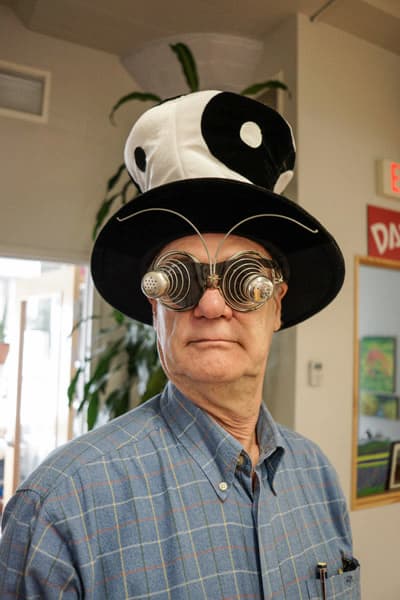
Scott Benson, Davis Publications National Sales Manager
My dad told me once that the publishing industry was not in Texas but on the East Coast. Being in a family publishing business and never meeting any local people that were publishers was the norm for me. Then along came Wyatt, a publisher who grew up in Houston and graduated from The University of Texas history department. We became friends and competitors, and ended up working together for 25 years.
Through the ups and downs of the publishing business, Wyatt’s personality stayed the same and storytelling was always his strong suit. Wyatt should be remembered for the body of work he put together over the years at Davis Publications. National K–12 art education curriculums that were widely accepted as the best on the market. The Art Education in Practice series, which he shepherded along, provided art educators with a scholarly look into cutting-edge topics of the day. Wyatt took dead aim on quality art education for students and teachers and succeeded at this in his many years at Davis.
I will always remember his storytelling and the cowboy hats he wore, whether on Portland Street in Worcester or walking into the Texas Capitol in Austin. Wyatt was one of a kind and will be truly missed.
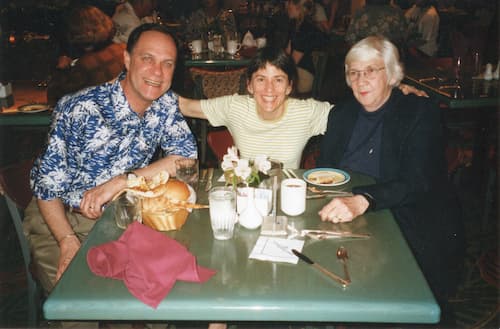
Cheryl Maney, Davis Publications Consultant, former Art Supervisor, Charlotte-Mecklenburg SD, NC
Davis Publications has been my companion since the very first day I walked into an art room to teach. I don’t recall the first time I met Wyatt properly, but I do recall being told that the tall, lean cowboy in the jeans, boots, and cowboy hat at NAEA conventions was Wyatt Davis. I’m so glad I learned his correct name before I met him in person! As I transitioned out of the classroom and into my supervisor’s role, I was fortunate to attend one of the Retreats for Supervisors at Sundance. I will forever remember how well we were treated and how refreshing it was to have dedicated time with other supervisors to talk about art education.
Many years later, when I became the NAEA Supervision and Administration Division Director, I contacted Wyatt to ask him if Davis would be interested in sponsoring a Supervision Summit, as a pre-convention, day-long event. Between Wyatt and Julian, they worked it out and came back with a resounding yes. It gave Davis a way to continue their long-standing support of art education and the supervisors.
Whether at Supervisors Retreats or Summits, the question has always been, “What can Davis do for you and art educators? What resources do you need? How can we work with you to keep the field moving forward?” That was the culture Wyatt built. It is synonymous with Davis and continues through Julian. You really can’t think about art education without thinking about Davis. And in my mind…he’ll always be Wyatt Davis, Art Education Hero.
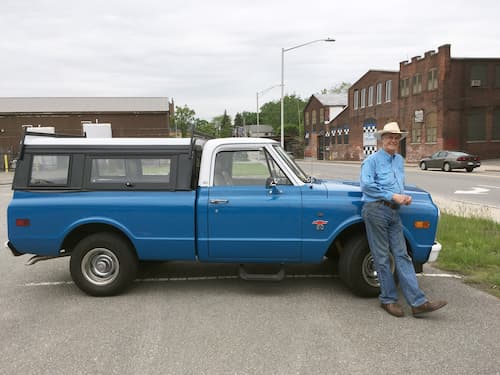
Ken Vieth, author of From Ordinary to Extraordinary: Art and Design Problem Solving, and Engaging the Adolescent Mind
Wyatt had a dynamic personality emphasized with his Texas ten-gallon hat. He was an amazing communicator and great supporter of art education. I remember state and national art conferences filled with Wyatt’s energy. He had the ability to connect with people along with a great sense of humor. Wyatt was a big influence and inspired and supported me through the books I published. I will always be thankful for his support. He will be missed by many.
Other Nice Quotations:
“The Printers Building—and the community housed in it—exist because Wyatt Wade wouldn't stop dreaming of what it could be, and making those dreams come true. One day, maybe there really will be a zip line from the top of the Printers Building to the Canal District. If Wyatt dreamed it, it just might happen.” –ArtsWorcester, Facebook page, Feb 28, 2024
Read a tribute by Claire Mowbray Golding, a former editor for Davis and a long-time friend of Wyatt.


Comments